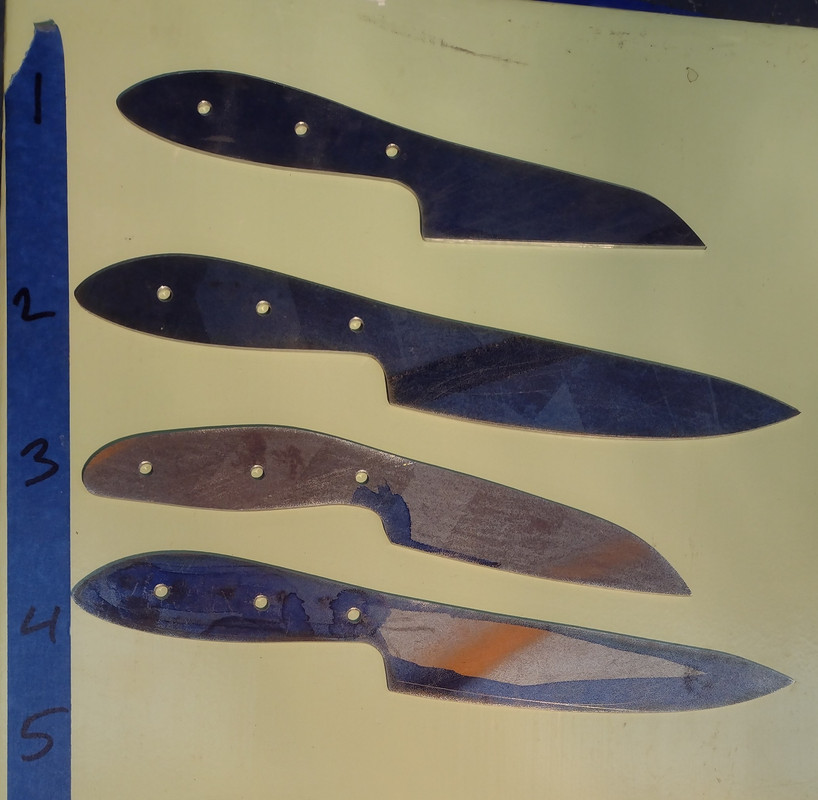- Joined
- Jun 24, 2019
- Messages
- 79
See title. Those steels are not acceptable for my pocket folding knives. Is it because they are super quick to sharpen?
The BladeForums.com 2024 Traditional Knife is ready to order! See this thread for details:
https://www.bladeforums.com/threads/bladeforums-2024-traditional-knife.2003187/
Price is $300 ea (shipped within CONUS). If you live outside the US, I will contact you after your order for extra shipping charges.
Order here: https://www.bladeforums.com/help/2024-traditional/ - Order as many as you like, we have plenty.
So they shouldn't make them in steels you don't like? Those steels are perfectly acceptable to a lot of people in folding knives let alone kitchen knives.See title. Those steels are not acceptable for my pocket folding knives. Is it because they are super quick to sharpen?
VG10 and R2 are both stainless and a bit harder than European steels--they market very effectively against quality European production knives for home cooks and some hobbyists. Enthusiasts often prefer carbon steel knives, and many home cooks purchase softer inexpensive mono steel knives. The differences between steels used for pocket knives and steels used for Japanese kitchen knives are far more complex than you seem to be supposing.See title. Those steels are not acceptable for my pocket folding knives. Is it because they are super quick to sharpen?
I don't understand, I have several pocket knives in D2 and some fixed blades in VG-10. D2 has been underrated for a long time I think.See title. Those steels are not acceptable for my pocket folding knives. Is it because they are super quick to sharpen?
I haven't tried every knife steel out there but I prefer the carbons, white, blue, AS.1 - what is valued in an edc knife is not the same as what is valued in a kitchen knife
2 - acceptable is largely self defined - don't buy one if you don't like the combination of price and steel
3 - I bet you look at a lot of factory knives
4 - D2 hasn't been used in a true Japanese kitchen knife that I know of, though SKD11 sometimes is. Now Chinese make look alikes on the other hand . . .
5 - VG-10 is a combination of rust resistance, reasonably fine grained, and durability for it's hardness
6 - that said Japanese smiths seem to use mostly blue and white steels. Somehow the majority of my collection is blue/blue super

See, that's the problem IMOD2 with it's large, toothy, chonky carbides, cuts through flesh and hide like a Monster!!!
A Apalachicola I think you're going to have to give us some more detail about why you don't like those steels?
Remember in a kitchen environment you have easy access to cleaning and sharpening equipment, and you are cutting relatively soft things in a controlled way. Where as i don't know what you all are doing out in the bush.
Also if you're looking at the VG10 end of the spectrum you have to consider the cost of a ton of the steel where you're making the knife
See, that's the problem IMOthe large carbides means it doesn't take a sufficiently fine edge and does too much cellular damage when you cut through food. This is why a lot of sushi chefs* like White steels. I like fine grain structure and small carbides to get very clean cuts
*apparently some like VG10 according to Budrichard above, but I haven't seen that. Not that i actually like sushi
Yeah, same. I think we cook very differently, I mostly cook vegetarian stuff. A serrated knife for a tomato leaves a very messy surface that leaks a lot of juice. take a potato where you want to minimize the amount of loose starch, or herbs where you keep it intact so there's more flavour to be released when you bite into it.Not arguing, just trying to understand.....
Yeah, same. I think we cook very differently, I mostly cook vegetarian stuff. A serrated knife for a tomato leaves a very messy surface that leaks a lot of juice. take a potato where you want to minimize the amount of loose starch, or herbs where you keep it intact so there's more flavour to be released when you bite into it.
but yeah, i think i can see how the rougher edge would work better for a lot of meat
